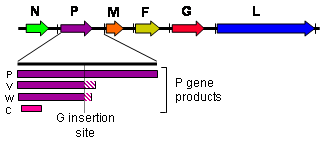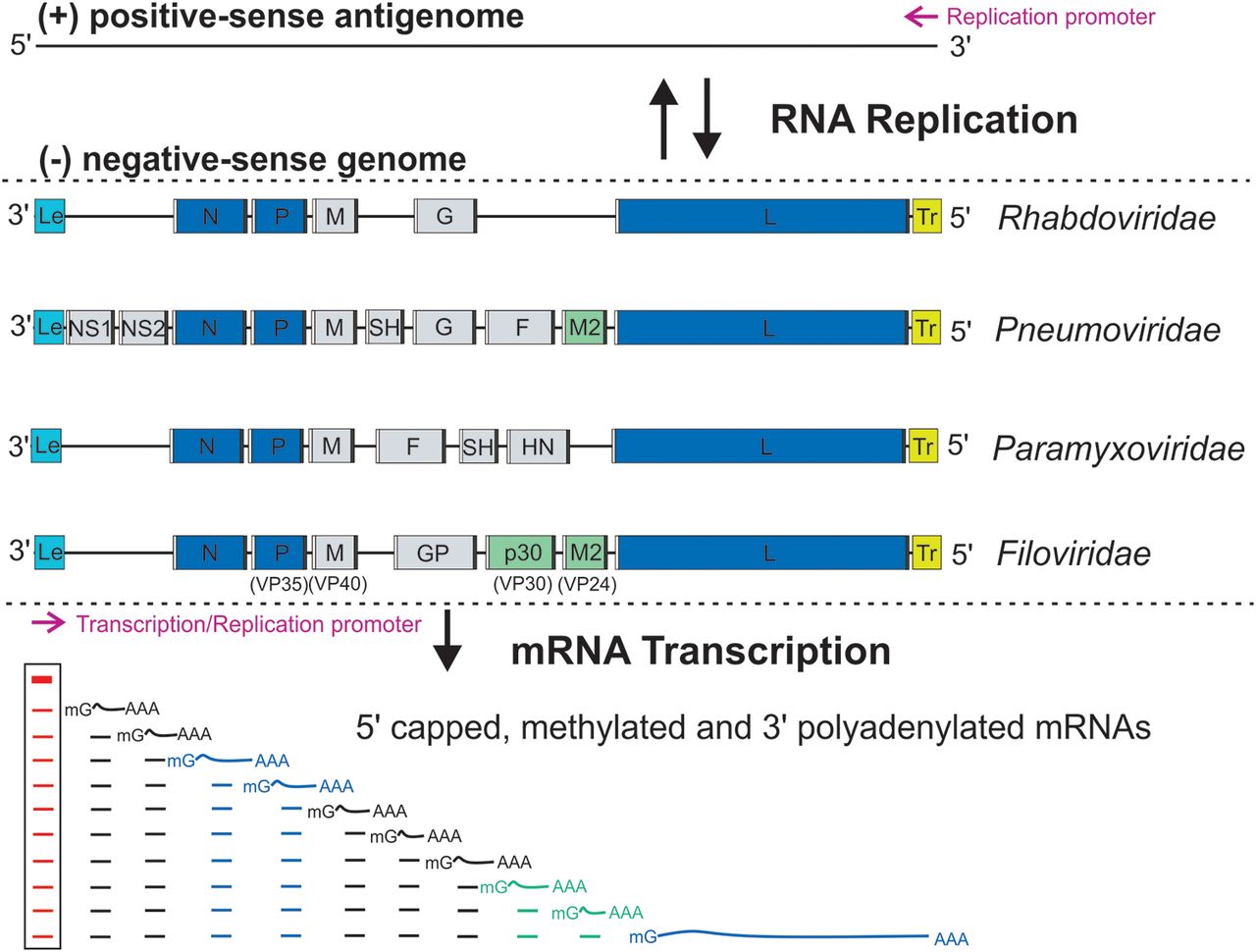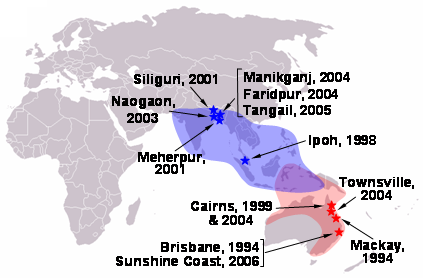|
Henipavirus
''Henipavirus'' is a genus of negative-strand RNA viruses in the family ''Paramyxoviridae'', order ''Mononegavirales'' containing six established species, and numerous others still under study. Henipaviruses are naturally harboured by several species of small mammals, notably Pteropus, pteropid fruit bats (flying foxes), microbats of several species, and shrews. Henipaviruses are characterised by long genomes and a wide host range. Their recent emergence as zoonosis, zoonotic pathogens capable of causing illness and death in domestic animals and humans is a cause of concern. In 2009, RNA sequences of three novel viruses in phylogenetic relationship to known henipaviruses were detected in African straw-colored fruit bats (''Eidolon helvum'') in Ghana. The finding of these novel henipaviruses outside Australia and Asia indicates that the region of potential endemicity of henipaviruses may be worldwide. These African henipaviruses are slowly being characterised. ''Nipah virus, Nipa ... [...More Info...] [...Related Items...] OR: [Wikipedia] [Google] [Baidu] |
Ghanaian Bat Henipavirus
''Ghanaian bat henipavirus'' (also known Kumasi virus (KV) belongs to the genus ''Henipavirus'' in the family ''Paramyxoviridae''. Human infections are caused by zoonotic events where the virus crosses over from another animal species. Therefore, humans are not the innate host for this virus family but instead become infected by peripheral viral reservoirs such as bats and other carriers of the virus. When these virus are spread to humans through zoonotic events they have been found to be one of the most deadly viruses with the capability to infect humans, with mortality rates between 50 and 100%. Therefore, these viruses have been classified as a biosafety level four (BSL-4) virus with regards to its pathogenesis when it infects humans. Compared to other henipaviruses, KV exhibits reduced surface expression of the attachment glycoprotein (KV-G). It is likely that KV-G expression is delayed in the endoplasmic reticulum and is not exported as readily to the cell surface due to d ... [...More Info...] [...Related Items...] OR: [Wikipedia] [Google] [Baidu] |
Henipavirus Structure
''Henipavirus'' is a genus of negative-strand RNA viruses in the family ''Paramyxoviridae'', order ''Mononegavirales'' containing six established species, and numerous others still under study. Henipaviruses are naturally harboured by several species of small mammals, notably pteropid fruit bats (flying foxes), microbats of several species, and shrews. Henipaviruses are characterised by long genomes and a wide host range. Their recent emergence as zoonotic pathogens capable of causing illness and death in domestic animals and humans is a cause of concern. In 2009, RNA sequences of three novel viruses in phylogenetic relationship to known henipaviruses were detected in African straw-colored fruit bats (''Eidolon helvum'') in Ghana. The finding of these novel henipaviruses outside Australia and Asia indicates that the region of potential endemicity of henipaviruses may be worldwide. These African henipaviruses are slowly being characterised. ''Nipah'' and '' Hendra henipaviruses' ... [...More Info...] [...Related Items...] OR: [Wikipedia] [Google] [Baidu] |
Henipavirus Genome
''Henipavirus'' is a genus of negative-strand RNA viruses in the family ''Paramyxoviridae'', order ''Mononegavirales'' containing six established species, and numerous others still under study. Henipaviruses are naturally harboured by several species of small mammals, notably pteropid fruit bats (flying foxes), microbats of several species, and shrews. Henipaviruses are characterised by long genomes and a wide host range. Their recent emergence as zoonotic pathogens capable of causing illness and death in domestic animals and humans is a cause of concern. In 2009, RNA sequences of three novel viruses in phylogenetic relationship to known henipaviruses were detected in African straw-colored fruit bats (''Eidolon helvum'') in Ghana. The finding of these novel henipaviruses outside Australia and Asia indicates that the region of potential endemicity of henipaviruses may be worldwide. These African henipaviruses are slowly being characterised. ''Nipah'' and '' Hendra henipaviruses' ... [...More Info...] [...Related Items...] OR: [Wikipedia] [Google] [Baidu] |
Mononegavirales
''Mononegavirales'' is an order of negative-strand RNA viruses which have nonsegmented genomes. Some common members of the order are Ebola virus, human respiratory syncytial virus, measles virus, mumps virus, Nipah virus, and rabies virus. All of these viruses cause significant disease in humans. Many other important pathogens of nonhuman animals and plants are also in the group. The order includes eleven virus families: '' Artoviridae'', ''Bornaviridae'', ''Filoviridae'', ''Lispiviridae'', ''Mymonaviridae'', ''Nyamiviridae'', ''Paramyxoviridae'', ''Pneumoviridae'', ''Rhabdoviridae'', '' Sunviridae'', and ''Xinmoviridae''. Use of term The order ''Mononegavirales'' (pronounced: ) According to the rules for taxon naming established by the International Committee on Taxonomy of Viruses (ICTV), the name ''Mononegavirales'' is always to be capitalized, italicized, and never abbreviated. The names of the order's physical members ("mononegaviruses" or "mononegavirads") are to be writte ... [...More Info...] [...Related Items...] OR: [Wikipedia] [Google] [Baidu] |
Hendra Virus
Hendra virus (HeV), scientific name ''Hendra henipavirus'', is a bat-borne virus that is associated with a highly fatal infection in horses and humans. Numerous disease outbreaks in Australia among horses have been caused by Hendra virus. The Hendra virus belongs to the genus ''Henipavirus'', which also contains the Nipah virus, which has also caused disease outbreaks. Pathology Flying foxes experimentally infected with the Hendra virus develop a viraemia and shed the virus in their urine, faeces and saliva for approximately one week. There is no other indication of an illness in them. Symptoms of Hendra virus infection of humans may be respiratory, including hemorrhage and edema of the lungs, or in some cases viral meningitis. In horses, infection usually causes one or more of pulmonary oedema, congestion and neurological signs. Ephrin B2 has been identified as the main receptor for the henipaviruses. Transmission Flying foxes have been identified as the reservoir host of Hend ... [...More Info...] [...Related Items...] OR: [Wikipedia] [Google] [Baidu] |
Hendra Henipavirus
Hendra virus (HeV), scientific name ''Hendra henipavirus'', is a bat-borne virus that is associated with a highly fatal infection in horses and humans. Numerous disease outbreaks in Australia among horses have been caused by Hendra virus. The Hendra virus belongs to the genus ''Henipavirus'', which also contains the Nipah virus, which has also caused disease outbreaks. Pathology Flying foxes experimentally infected with the Hendra virus develop a viraemia and shed the virus in their urine, faeces and saliva for approximately one week. There is no other indication of an illness in them. Symptoms of Hendra virus infection of humans may be respiratory, including hemorrhage and edema of the lungs, or in some cases viral meningitis. In horses, infection usually causes one or more of pulmonary oedema, congestion and neurological signs. Ephrin B2 has been identified as the main receptor for the henipaviruses. Transmission Flying foxes have been identified as the reservoir host of Hendr ... [...More Info...] [...Related Items...] OR: [Wikipedia] [Google] [Baidu] |
Nipah Henipavirus
Nipah virus, scientific name ''Nipah henipavirus'', is a bat-borne virus that causes Nipah virus infection in humans and other animals, a disease with a high mortality rate. Numerous disease outbreaks caused by Nipah virus have occurred in South and Southeast Asia. Nipah virus belongs to the genus ''Henipavirus'' along with the Hendra virus, which has also caused disease outbreaks. Virology Like other henipaviruses, the Nipah virus genome is a single (nonsegmented) negative-sense, single-stranded RNA of over 18 kb, which is substantially longer than that of other paramyxoviruses. The enveloped virus particles are variable in shape, and can be filamentous or spherical; they contain a helical nucleocapsid. Six structural proteins are generated: N (nucleocapsid), P (phosphoprotein), M (matrix), F (fusion), G (glycoprotein) and L (RNA polymerase). The ''P'' open reading frame also encodes three nonstructural proteins, C, V and W. There are two envelope glycoproteins. The G gl ... [...More Info...] [...Related Items...] OR: [Wikipedia] [Google] [Baidu] |
Nipah Virus
Nipah virus, scientific name ''Nipah henipavirus'', is a bat-borne virus that causes Nipah virus infection in humans and other animals, a disease with a high mortality rate. Numerous disease outbreaks caused by Nipah virus have occurred in South and Southeast Asia. Nipah virus belongs to the genus ''Henipavirus'' along with the Hendra virus, which has also caused disease outbreaks. Virology Like other henipaviruses, the Nipah virus genome is a single (nonsegmented) negative-sense, single-stranded RNA of over 18 kb, which is substantially longer than that of other paramyxoviruses. The enveloped virus particles are variable in shape, and can be filamentous or spherical; they contain a helical nucleocapsid. Six structural proteins are generated: N (nucleocapsid), P (phosphoprotein), M (matrix), F (fusion), G (glycoprotein) and L (RNA polymerase). The ''P'' open reading frame also encodes three nonstructural proteins, C, V and W. There are two envelope glycoproteins. The G ... [...More Info...] [...Related Items...] OR: [Wikipedia] [Google] [Baidu] |
Langya Henipavirus
''Langya henipavirus'' (LayV), also known as Langya virus, is a species of henipavirus first detected in the Chinese provinces of Shandong and Henan. It has been announced in 35 patients from 2018 to August 2022. All but 9 of the 35 cases in China were infected with LayV only, with the symptoms including fever, fatigue, and cough. No deaths due to LayV have been reported . Langya henipavirus affects species including humans, dogs, goats, and its presumed original host, shrews. The 35 cases were not in contact with each other, and it is not known if the virus is capable of human-to-human transmission. Etymology The name of the virus in Simplified Chinese (, ) refers to Langya Commandery, a historical commandery in present-day Shandong, China. Classification Langya henipavirus is classified as a henipavirus in the family ''Paramyxoviridae''. Its closest relative, the Mojiang henipavirus, is the only other henipavirus not to be found primarily in bats. It is also closely related to ... [...More Info...] [...Related Items...] OR: [Wikipedia] [Google] [Baidu] |
Pteropus
''Pteropus'' (suborder Yinpterochiroptera) is a genus of megabats which are among the largest bats in the world. They are commonly known as fruit bats or flying foxes, among other colloquial names. They live in South Asia, Southeast Asia, Australia, East Africa, and some oceanic islands in the Indian and Pacific Oceans. There are at least 60 Extant taxon, extant species in the genus. Flying foxes eat fruit and other plant matter, and occasionally consume insects as well. They locate resources with their keen sense of smell. Most, but not all, are nocturnality, nocturnal. They navigate with keen eyesight, as they cannot Animal echolocation, echolocate. They have R/K selection theory#K-selection, long life spans and low reproductive outputs, with females of most species producing only one offspring per year. Their slow life history makes their populations vulnerable to threats such as Overexploitation, overhunting, culling, and natural disasters. Six flying fox species have been ... [...More Info...] [...Related Items...] OR: [Wikipedia] [Google] [Baidu] |
Fruit Bat
Megabats constitute the family Pteropodidae of the order Chiroptera (bats). They are also called fruit bats, Old World fruit bats, or—especially the genera ''Acerodon'' and ''Pteropus''—flying foxes. They are the only member of the superfamily Pteropodoidea, which is one of two superfamilies in the suborder Yinpterochiroptera. Internal divisions of Pteropodidae have varied since subfamilies were first proposed in 1917. From three subfamilies in the 1917 classification, six are now recognized, along with various tribes. As of 2018, 197 species of megabat had been described. The leading theory of the evolution of megabats has been determined primarily by genetic data, as the fossil record for this family is the most fragmented of all bats. They likely evolved in Australasia, with the common ancestor of all living pteropodids existing approximately 31 million years ago. Many of their lineages probably originated in Melanesia, then dispersed over time to mainland Asia, th ... [...More Info...] [...Related Items...] OR: [Wikipedia] [Google] [Baidu] |
Cedar Henipavirus
Cedar virus, officially ''Cedar henipavirus'', is a henipavirus known to be harboured by '' Pteropus spp''. Infectious virus was isolated from the urine of a mixed ''Pteropus alecto'' and '' P. poliocephalus'' in Queensland, Australia in 2009. Unlike the Nipah and Hendra virus, Cedar virus infection does not lead to obvious disease ''in vivo''. Infected animals mounted effective immune responses and seroconverted in challenge studies. Unlike Hendra and Nipah, which attach to Ephrin B2 or B3, Cedar virus can also attach to Ephrin B1 Ephrin B1 is a protein that in humans is encoded by the ''EFNB1'' gene. It is a member of the ephrin family. The encoded protein is a type I membrane protein and a ligand of Eph-related receptor tyrosine kinases. It may play a role in cell adhes .... This may be responsible for lack of observed pathogenicity or development of severe meningoencephalitis and spinal inflammation. However the atypical course of disease observed in Cedar virus infection ... [...More Info...] [...Related Items...] OR: [Wikipedia] [Google] [Baidu] |






